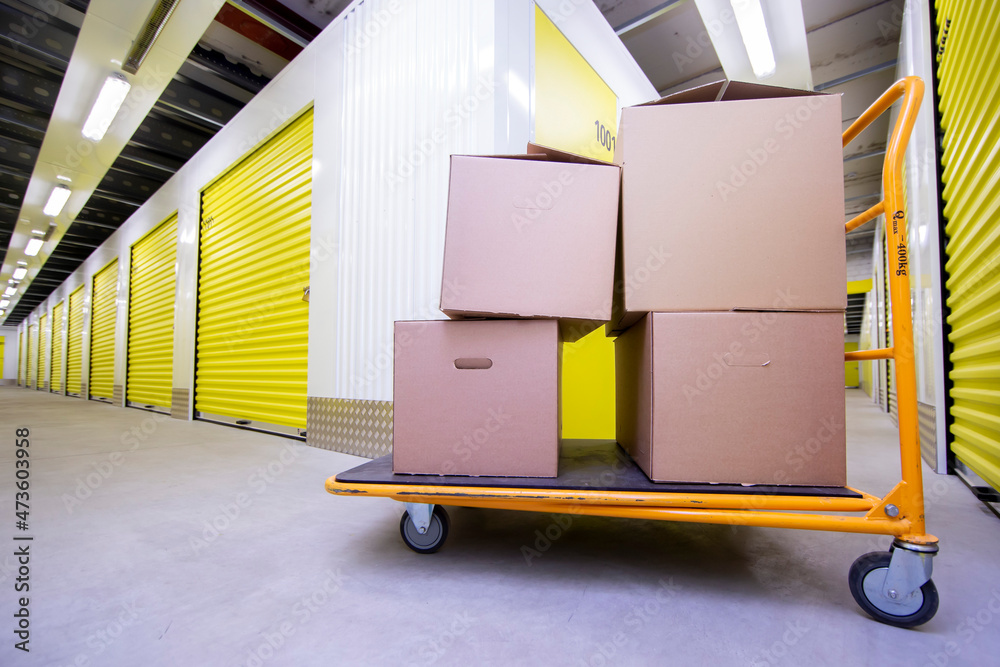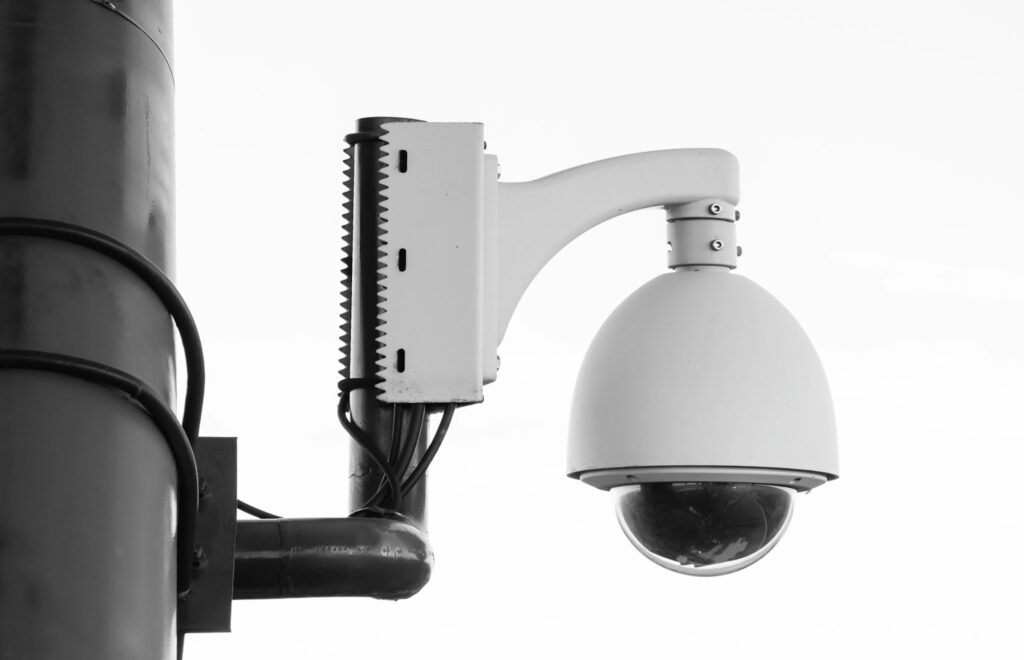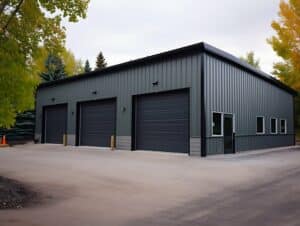If you are thinking of how to start a self-storage business, it’s worth knowing that it can be a lucrative venture for entrepreneurs looking to tap into the growing demand for storage space. However, like any business, self storage requires a thorough business plan and implementation to ensure long-term success.
As of September 2022, Public Storage was the leading self-storage company in the U.S., with a market capitalization of over $51 billion. This is twice as high as the second-biggest company, Extra Space Storage. Public Storage generated approximately $3.2 billion in revenue in 2022, surpassing Extra Space Storage by over $1 billion. (Statista)
In this article, we will outline the key steps to successfully start your self-storage business.
Table of Contents:
- Understanding the Self-Storage Industry
- Developing Your Self Storage Business Plan
- Financing Your Self-Storage Business
- Choosing the Right Facility and Equipment
- Implementing Effective Marketing Strategies
- Conclusion
- Frequently Asked Questions
Understanding the Self-Storage Industry
Before diving into the details of starting your own self-storage business, it’s important to have a solid understanding of the industry as a whole. The self-storage market has experienced significant growth in recent years, driven by factors such as urbanization, downsizing, and the increasing need for extra storage space.

By familiarizing with the industry trends and dynamics, you can start a self storage business and position yourself for success.
The self-storage industry is a dynamic and evolving sector that caters to a wide range of customers with diverse storage needs.
From individuals seeking temporary storage solutions during a move to businesses looking to store excess inventory, self-storage facilities offer a versatile and convenient storage option.
Understanding the various customer segments and their unique requirements can help you tailor your services to meet their specific needs, ultimately setting your business apart in a competitive market.
Check out: How To Build A Self-storage Facility
Key Trends in the Self-Storage Market
Keeping abreast of the latest trends in the self-storage market is crucial for devising a winning business strategy. Some key trends to watch out for include:
- Rise of portable storage units
- Increasing demand for climate-controlled units
- Growing popularity of self-storage for business use
As the self-storage industry continues to evolve, staying ahead of these trends can give you a competitive edge and help you anticipate the changing needs of your customers.
Embracing innovations such as portable storage units and climate-controlled facilities can attract a broader customer base and enhance the overall appeal of your self-storage business.
Did You Know?
Self-storage is a popular alternative real estate investment. As of September 2022, REITs (real estate investment trusts) in this segment had a market cap of approximately $90 billion, accounting for about 10 percent of the total equity REITs market.
The Importance of Location in Self-Storage Business
Location plays a critical role in the success of your self-storage business. Choose a location that is easily accessible, strategically located in an area with high demand, and has sufficient space to accommodate your facility.
To determine the ideal location, consider factors such as population density, competition, and proximity to residential and commercial areas. Conduct thorough market research to identify gaps in the market and find a location that offers growth potential for your business.
Furthermore, the security and accessibility of your chosen location are also key considerations.
Customers value convenience and safety when selecting a self-storage facility, so investing in robust security measures and ensuring easy accessibility can help build trust and loyalty among your clientele.
Developing Your Self Storage Business Plan
A comprehensive business plan is essential for guiding the growth and development of your self-storage business. It acts as a roadmap, outlining your objectives, strategies, and financial projections.
When developing your business plan, it’s important to consider not only the current state of the self-storage industry but also future trends and potential challenges.
Conducting a thorough market analysis can help you understand the competitive landscape, identify growth opportunities, and anticipate changes in consumer behavior.
Identifying Your Target Market
Identifying your target market is a crucial step in developing your business plan. Determine who your ideal customers are and tailor your services to meet their specific needs. Consider factors such as demographics, location, and the unique selling points of your facility.
Furthermore, conducting market research to gain insights into the preferences and behaviors of your target market can help you refine your marketing strategies and enhance customer satisfaction.
By understanding what drives your customers’ decisions, you can position your self-storage business as the top choice in the market.
Setting Your Business Objectives
Clearly define your business objectives to provide a roadmap for success. Your objectives may include financial targets, customer retention goals, and expansion plans.
Make sure your objectives are realistic, measurable, and time-bound to track your progress effectively.
In addition to setting specific business objectives, it’s crucial to establish key performance indicators (KPIs) to monitor and evaluate the success of your strategies.
By regularly reviewing your KPIs, you can identify areas for improvement, capitalize on strengths, and make informed decisions to drive the growth of your self-storage business.
Financing Your Self-Storage Business
Securing adequate financing is vital to get your self-storage business off the ground. Start by estimating the start-up costs for the self storage business, which may include property acquisition, facility construction or renovation, equipment purchase, marketing expenses, and initial working capital.
Before diving into the financial aspects of your self-storage business, it’s crucial to conduct thorough market research.
Understanding the demand for self-storage units in your target area, analyzing your competition, and identifying your unique selling points can greatly impact your financial planning.
By gathering this information, you can make more informed decisions when estimating your start-up costs and projecting your future revenue.
Did You Know?
There are at least 52,300 storage facilities in the US, with average occupancy of 96.5 percent. 90 percent of worldwide self-storage inventory is in the U.S.
Estimating Start-Up Costs
Thoroughly analyze all the costs involved in setting up your self-storage business. This includes not only the physical infrastructure but also administrative expenses, legal fees, and insurance costs.
Ensure your financial projections are realistic and take into account potential risks and unexpected expenses.
When estimating your start-up costs for a self storage business, don’t forget to include expenses related to technology and security measures.
Implementing a reliable security system and investing in user-friendly management software are essential components of a successful self-storage business.
By factoring in these costs from the beginning, you can create a more comprehensive budget that aligns with industry standards and customer expectations.
Check out: Estimating Mini Storage Building Costs: A Financial Overview
Exploring Financing Options
Once you have a clear understanding of your start-up costs, explore various financing options for the self storage business.
These may include traditional bank loans, SBA loans, angel investors, or personal savings. Carefully evaluate each option and choose the one that best suits your financial needs and long-term goals.
Additionally, consider alternative financing methods such as crowdfunding or equipment financing specifically tailored for self-storage businesses.
These options can provide unique benefits and flexibility that traditional loans may not offer. By diversifying your financing sources, you can mitigate risks and ensure a stable financial foundation for your self-storage venture.
Choosing the Right Facility and Equipment
The success of your self-storage business relies heavily on selecting the right facility and equipment. This includes finding the ideal facility size and investing in essential equipment to meet the needs of your customers.
When considering the ideal facility size for your self-storage business, it’s essential to delve deeper into the factors that can impact your decision.
Market demand plays a significant role in determining the size of your facility. Conduct thorough market research to understand the needs of potential customers in your area.
Additionally, the location of your facility can influence its size requirements. Urban areas may benefit from smaller, more conveniently located facilities, while suburban or rural areas might necessitate larger spaces to cater to a wider customer base.
Operational costs should also be factored in when deciding on the size of your facility. Larger facilities may offer greater revenue potential, but they also come with higher overhead costs.
Striking a balance between demand, location, and profitability is key to ensuring the optimal utilization of your resources.
Selecting the Ideal Facility Size
When choosing the size of your facility, consider factors such as market demand, location, and operational costs.
A larger facility may offer greater revenue potential but comes with higher overheads. Strike a balance between demand and profitability to ensure optimal utilization of your resources.
Essential Equipment for Your Self-Storage Business
Investing in the right equipment is crucial for the smooth operation of your self-storage facility. Some essential equipment includes:
- Security systems: Surveillance cameras, access control systems, and alarms
- Storage units: Various sizes and types of storage units to accommodate different customer needs
- Packing supplies: Boxes, tape, and packing materials to assist customers with their storage needs
Enhancing the security measures at your self-storage facility can provide peace of mind to your customers and help prevent unauthorized access or theft. Surveillance cameras strategically placed throughout the facility can deter criminal activity and provide valuable evidence in case of any incidents.
Access control systems, such as keypads or electronic key fobs, can restrict entry to authorized personnel only, adding an extra layer of security.
Alarms linked to individual storage units can alert staff and authorities in case of any tampering or unauthorized access, ensuring the safety of your customer’s belongings.

Implementing Effective Marketing Strategies
To attract customers and build a strong customer base, it’s essential to implement targeted marketing strategies for your self-storage business.
When it comes to marketing your self-storage business, a multifaceted approach is key. In addition to online and offline strategies, consider implementing email marketing campaigns to engage with both potential and existing customers.
Personalized emails showcasing promotions, storage tips, and facility updates can help nurture customer relationships and drive conversions.
Pro tip:
A study by the Self Storage Association (SSA) found that areas with high rental populations, such as urban centers or college towns, often exhibit increased demand for self-storage units. Targeting such locations and understanding the competitive and regulatory landscape, can position your self storage business for success.
Building a Strong Online Presence
Having a strong online presence is crucial in today’s digital age. Develop a professional website that showcases your facility, highlights its unique features, and provides an easy online booking system for customers.
Leverage social media platforms and online advertising to reach your target market effectively.
Furthermore, search engine optimization (SEO) plays a vital role in increasing your online visibility.
By optimizing your website with relevant keywords, creating valuable content, and obtaining backlinks from reputable sources, you can improve your search engine rankings and attract organic traffic to your site.
Offline Marketing Tactics for Self-Storage Businesses
While digital marketing is important, don’t overlook the power of offline marketing tactics. Consider distributing flyers, using billboards, and partnering with local businesses to increase brand awareness.
Attend local community events and trade shows to promote your self-storage facility.
Another effective offline strategy is establishing partnerships with real estate agents or property management companies.
By offering referral incentives and building mutually beneficial relationships, you can tap into new customer networks and drive business growth through word-of-mouth marketing.
Conclusion
Launching a self-storage business requires careful planning and execution. Understand the industry trends, develop a solid business plan, secure adequate financing, choose the right facility and equipment, and implement effective marketing strategies.
By following these steps, you can embark on your journey toward a successful self-storage business.
SteelCo has over 23 years of experience in dropshipping PEMB materials for storage building construction and boasts a combined team industry experience of over 100 years. Our expertise allows us to provide assistance with basic designs, stamped engineering plans, and project support for timeline coordination.
We can offer assistance with obtaining necessary building permits, zoning, and local ordinances. Learn more about our prefabricated self-storage building services.
———————–
Frequently Asked Questions
What’s the average cost of renting a self-storage?
The current average price to rent a self-storage unit in the United States is $85.14 per month, as of March 2024. This price includes all unit sizes and types. However, keep in mind that the cost can vary based on factors such as unit size, geographic location, and any amenities (such as climate control) offered by the facility
Which state is best for building a self storage?
When investing in self-storage facilities, consider states like Texas, Florida, Arizona, and North Carolina. These states offer favorable economic conditions, population growth, and demand for storage space. Texas, with its diverse economy, leads in the number of self-storage facilities, while Florida’s population growth drives demand. Arizona provides tax incentives, and North Carolina has strong fundamentals for investment. Choose wisely based on location, demographics, and local demand.
What’s the average revenue for a self storage business?
Owners of medium—to large-sized self-storage facilities can expect an average annual income of $80,000 to $150,000. This is an estimate and could be affected by several factors.
What is the profit margin on self storage?
The profitability of a self-storage business relies on various factors, such as location, operational efficiency, and the range of services provided. An average self-storage facility achieves a profit margin of about 41%.
How much land do you need for a self storage business?
The average self-storage facility typically covers 2.5 to 5 acres and encompasses approximately 46,000 net rentable square feet. New construction costs can range from $25 to $75 per square foot. Keep in mind that specific requirements may vary based on location, zoning regulations, and business licensing
























